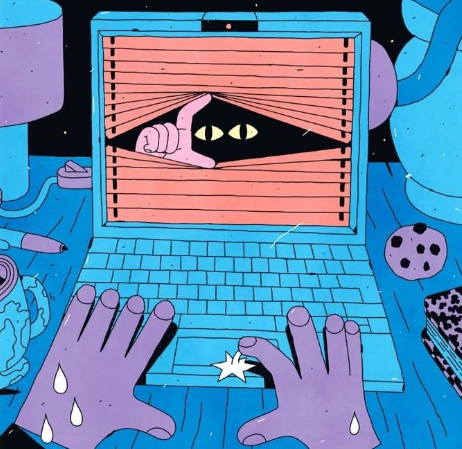Don’t Click That! A Simple Guide to Identifying Phishing Emails in 2025

Phishing scams are no longer riddled with spelling errors or suspicious links. In 2025, they’re polished, personalized, and powered by AI.
Today’s phishing emails can look like they’re from your CEO, your bank, your school district—even your IT team. And when even tech-savvy users are falling for them, it’s clear: cybersecurity awareness is no longer optional.
At Pacific IT Support, we help businesses, nonprofits, and schools train their teams to spot red flags before they become full-blown data breaches. Here’s your simple, shareable guide to help your staff say, “Wait a minute… I’m not clicking that.”
Also read: The Human Firewall: How to Train Your Staff to Spot Phishing in 2025
What Is Phishing in 2025?
Phishing is a type of cyberattack where a bad actor pretends to be someone trustworthy—via email, text, or even voicemail—to trick someone into:
- Clicking a malicious link
- Downloading malware
- Sending sensitive data
- Transferring money or gift cards
- Logging in to a fake system
These attacks are no longer one-size-fits-all. With AI-powered tools, cybercriminals can now personalize phishing emails using your public info, recent job posts, and even your company’s branding.
Read also: Why MFA Alone Is No Longer Enough in 2025
Real-Life Phishing Examples We’ve Seen (Yes, in 2025)
Example #1: The “CEO Quick Request” Email
From: ceo@yourcompany.co
Subject: Need a quick favor
“Hey, I’m stepping into a meeting but need you to send me five $100 Apple gift cards for a vendor. Just reply once it’s done.”
Red flag: Slightly off email domain, urgent tone, and unusual request.
Example #2: The Fake Invoice from Microsoft
“Your Microsoft 365 invoice for $847.22 is attached. Click here to manage your billing account.”
Red flag: Unexpected invoice, high amount to provoke panic, link to a lookalike portal.
Example #3: The Missed Delivery
“We missed your package delivery. Please reschedule your drop-off within 24 hours or it will be returned.”
Red flag: Generic sender, vague package details, shortened tracking links.
Read also: How to Spot and Report Phishing Emails
Spot These 7 Red Flags in Every Phishing Email
Use this simple checklist to help your team stay safe:
- Urgent tone — “Act now,” “last warning,” “your account will be locked.”
- Unfamiliar sender or domain — Always double-check the actual email address.
- Suspicious links — Hover over them. If the link doesn’t match the sender’s website, it’s a red flag.
- Unsolicited attachments — Especially .zip, .exe, or Word files with macros.
- Unexpected requests for payment, passwords, or gift cards
- Too generic — “Dear user” or “Valued customer” instead of your name.
- Too perfect — Even legit-looking emails can be fake if they’re too polished.
Read also: Don’t Get Hooked: Protect Your SMB from Phishing Attacks
Why Phishing Works (Even on Smart People)
It’s not about being careless—it’s about being busy, distracted, or under pressure.
Phishing emails often succeed because they:
- Create a sense of urgency
- Masquerade as authority figures
- Leverage FOMO or fear of penalties
- Use AI to craft flawless grammar and tone
Read also: Zero Trust Security Explained: Is Your Business Ready for It?
How Pacific IT Support Can Help
We offer Security Awareness Training designed to turn your staff into your first line of defense. Here’s what we include:
- Micro-training videos
- Realistic phishing simulation emails
- Progress tracking and risk scoring
- Refresher campaigns and reporting
- Templates for company-wide security policies
Whether you’re managing a school, clinic, nonprofit, or small business—we’ll help your team stay one step ahead of the threats.
Final Tips to Protect Your Organization
- Enable Multi-Factor Authentication (MFA) on all key systems
- Never click on links or download files from unknown senders
- Never wire money or send sensitive info over email
- Report phishing emails to your IT team ASAP
And remember: when in doubt—don’t click.
Let’s Train Your Team to Spot the Threats Before They Click
Don’t wait until a phishing email becomes a breach. Let’s train your people to be your human firewall.
📩 Contact Pacific IT Support today to roll out phishing simulations and cybersecurity training that actually works.